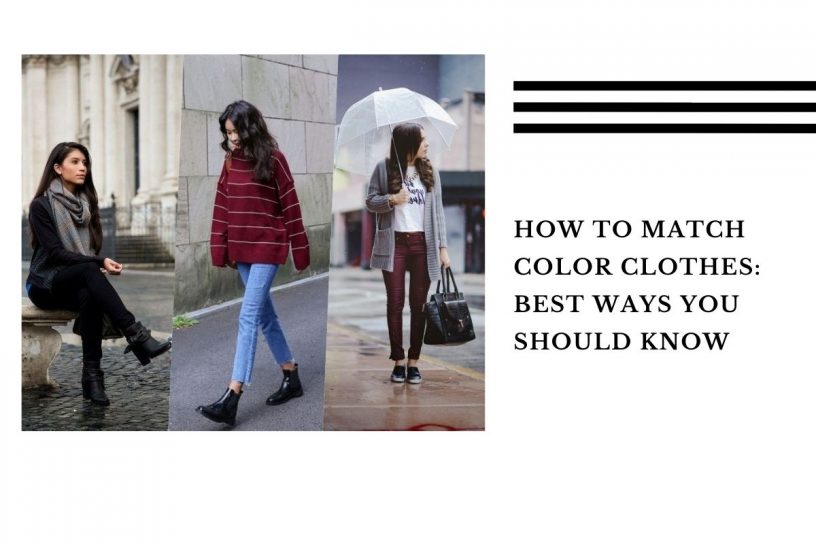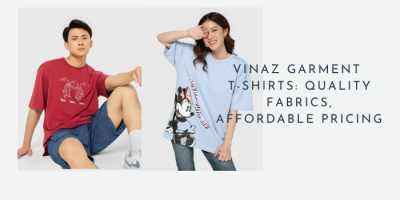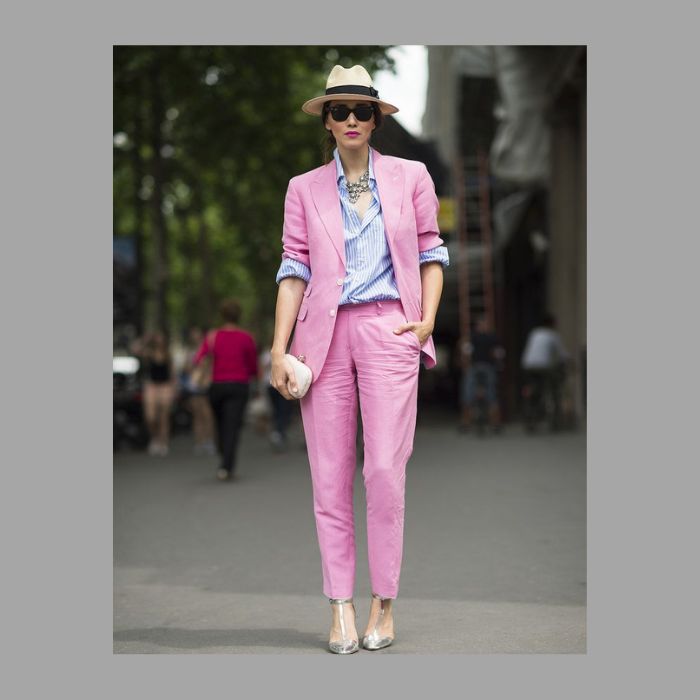With a little knowledge and some basic principles, anyone can learn how to match color clothes.
1. Understanding Color: Theory For How To Match Color Clothes
No matter how costly your clothing is, your style will not turn out the way you want it if the colors are not well coordinated. But don’t worry; after reading this essay, you will be completely familiar with the trendy color wheel. To see what we have in store for you, simply scroll down. So forward!
1.1. Color Theory For How To Match Color Clothes
A sale can be made by choosing how to match color clothes exactly. What makes you stand out is your ability to pick the ideal color for an outfit. And for this reason, color and its ideas continue to serve as the foundation for everything, including interior design, hair, makeup, and much more.
- Complimentary Colors: Two opposite/contrasting hues create striking harmony.
- Analogous Colors: Three adjacent hues that blend well together.
- Triadic Colors: A combination of any three equally spaced hues creates balance.
- Monochromatic Scheme: Different shades/tints/hues from the same base hue add depth & interest.
- Neutral Shades as Base Tones: Black, white, gray can be used as foundation tones while adding pops of brights.
Remember, color theory is not a strict rulebook. Experiment with different combinations and find what works best for you. Understanding color theory is essential for how to match color clothes. By knowing the basics of hue, value, and saturation, you can create perfect outfit combinations that complement your dressing style. Experiment with different color schemes and find what works best for you.
1.2. Color Wheel: How To Match Color Clothes
Sir Isaac Newton first created the color wheel in the 18th century when he attempted to compress the color spectrum into a wheel and illustrate the relationship between the colors. The following groups have been assigned to the wheel. This idea is general and may be used for practically everything that deals with colors, though we will concentrate on using it for clothing and ensembles.
2. How to Match Color Clothes with Your Skin Tone
To match color clothes with your skin tone flawlessly, you must first understand and identify it. Skin tones are broadly categorized as fair, medium, or dark, but undertones often go unnoticed. Undertones refer to the subtle hues beneath our skin’s surface that make us unique.
See more about:
How to choose your color palette for clothing
2.1. Identifying Your Skin Tone and Undertone: How to match color clothes
Identifying your skin tone and undertone starts by observing how you naturally tan under direct sunlight – pinkish hue (cool), yellowish hue (warm), or no hint of either (neutral).
Another method is holding up a white paper against your face in natural light to determine dominant colors on facial features. Once both details are figured out, half the job is done!
2.2. Matching Colors with Your Skin Tone: How to match color clothes
Cool-toned complexions look best in shades like blue, while warm-toned ones suit earthy colors better. Neutral tones can pull off any shade effortlessly!
2.3. Additional Tips for Matching Colors with Your Skin Tone
Remember, how to match color clothes with your skin tone is all about finding what works best for you.
- Stick to colors that complement your undertone
- Experiment with different shades of the same color
- Accessorize with contrasting colors to add depth to your outfit
- Don’t be afraid to mix and match colors
With these tips, you’ll be able to confidently choose colors that enhance your natural beauty!
3. Using Matching Colors To Create A Cohesive Outfit With How To Match Color Clothes
Creating a cohesive outfit with matching colors requires keeping some key things in mind.
- First, consider your skin tone when selecting colors for your outfit. Fair-skinned individuals should avoid pastels that can wash them out and opt instead for bold jewel tones like emerald or sapphire.
- Another important factor is the color wheel – this tool helps identify complementary colors that work well together. Colors opposite each other on the wheel create high contrast while adjacent hues offer more subtle harmonious pairings.
- Mix solid neutrals with bright pops of color. Using solid neutrals as a base and adding bright pops of color is a great way on how to match color clothes to create an eye-catching outfit. This technique is perfect for those who are new to matching colors.
- Use accessories such as belts or scarves to add interest and tie different pieces together.
- Accessories are a great way on how to match color clothes to add interest to an outfit and tie different pieces together. Belts and scarves are perfect for this purpose. Experiment with monochromatic looks by pairing shades from the same family (e.g., light blue shirt paired with navy pants).
- Monochromatic looks are a great way to create a cohesive outfit. Pairing shades from the same color family, such as a light blue shirt with navy pants, is a great way to achieve this look.
- Try layering different textures within similar color schemes (e.g., denim jacket over a white t-shirt paired with khaki shorts).
- Layering different textures within similar color schemes is a great way to add depth to an outfit.
For example, a denim jacket over a white t-shirt paired with khaki shorts is a great summer look. Use how to match color clothes sparingly but strategically; they can be used to break up monotony without overwhelming an ensemble. Patterns can be used to break up monotony without overwhelming an ensemble. Use them sparingly but strategically.
4. How to Match Color Clothes: Tips for Eye-Catching Outfits
Creating eye-catching outfits that make you stand out from the crowd can be achieved by matching complementary colors and using contrast. Complementary colors are opposite each other on the color wheel, like blue and orange or purple and yellow. Wearing these two colors together gives your outfit a bold pop of color while still looking cohesive. And it’s important to choose famous clothing factories to buy from like Vina Z Garment Factory, and they will advise you on the most eye-catching color schemes and combinations..
For an unforgettable look, try how to match color clothes for wearing a bright orange blouse with cobalt blue pants if you’re feeling adventurous. Another way to use contrast when pairing clothes is choosing pieces with different textures or patterns.
Pairing smooth silk tops with denim jeans creates interesting textural contrasts while sticking to classic neutrals like black and white.
To create visually stunning combinations consider:
- Combining deep reds with emerald greens
- Mustard yellows paired up crisp blues
Experimenting with textures is another way on how to match color clothes to create a unique look. Try combining leather with other fabrics to add depth and interest to your outfit. Remember, when it comes to matching colors, there are no hard and fast rules. The key is to experiment and have fun with your wardrobe!
5. Add Contrast According To The Coding Principles Of how to match color clothes
When accessorizing with colorful items, keep a few things in mind. First, choose accessories that complement or add contrast according to how to match color clothes. If your clothing is mainly one color like black or white, play around with different colors and patterns for accessories.
If your outfit already includes multiple colors, stick with neutral accessories that won’t clash or compete for attention. For example, if you’re wearing bright hues like reds and yellows together – consider adding simple gold jewelry or tan leather shoes.
- Choose accessories based on their hue’s complementary vs contrasting nature. When choosing accessories, consider how to match color clothes whether they complement or contrast with the colors in your outfit.
- This will help you create a cohesive look.
- Consider using the rule of three when layering necklaces: wear three pieces at varying lengths.
- This will add depth and interest to your outfit.
- Use scarves as versatile statement pieces by tying them creatively (e.g., knotting it into a bow).
- Scarves can add color, texture, and interest to an outfit.
- Mix metals intentionally rather than haphazardly; pair warm tones (like gold) with cool ones (like silver).
- This will create a balanced and intentional look.
- Don’t forget about texture! Add interest to an outfit through textured bags/shoes/jewelry such as woven straw bags/leather boots/beaded bracelets.
Tip: Add interest to an outfit through how to match color clothes textured bags/shoes/jewelry such as woven straw bags/leather boots/beaded bracelets. By following these tips, you can effectively accessorize your outfits and create a cohesive and stylish look.







Trả lời